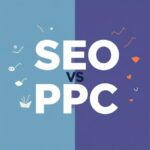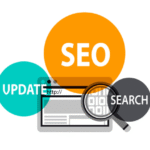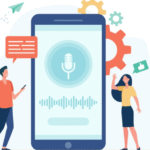Landing page optimization is crucial for any business aiming to boost online visibility, increase conversions, and drive revenue growth.
Imagine stepping into a world where your website isn’t just a site but a lead-generating machine. That’s the magic of lead-generation landing pages.
These aren’t your everyday web pages; they’re strategic, focused, and designed to turn visitors into leads quickly. Whether you’re a budding entrepreneur or a seasoned marketer, getting the hang of these pages is your ticket to success.
Lead generation landing pages are the Swiss Army knives of digital marketing. They include everything you need—from compelling headlines to irresistible calls to action (CTAs)—all in one place. However, their value extends beyond aesthetics; functionality is paramount.
These pages do a great job of capturing information, making it easier for you to turn leads into loyal customers.
So, let’s get into the details of how landing page optimization for lead generation works.
What is a Landing Page?
A landing page is a single web page crafted for a specific purpose. It captures leads, promotes products or services, and provides crucial information about a company or organization.
The primary aim? Convert visitors into leads and customers by delivering relevant information and compelling offers.
Landing pages are integral to digital marketing campaigns because they drive conversions effectively. They’re also vital in measuring the success of online campaigns.
By leveraging tracking tools like Google Analytics, FullStory, or HotJar, companies can analyze the performance of their landing pages and make necessary adjustments for optimal results.
The Three Stages of Landing Page Optimization
Identify potential issues in the landing page’s design or functionality
Identify and address specific user experience issues leading to low conversion and high bounce rates. Start by analyzing user behaviour data to pinpoint problems like confusing navigation, slow load times, or unappealing design elements. By doing so, you can make targeted improvements, such as redesigning key pages, optimizing website speed, and enhancing overall usability, ultimately leading to better results and a more satisfying user experience.
Conduct controlled experiments to evaluate page improvements
Test various page elements—headlines, copy, images, fonts, forms, and CTAs—to identify the optimal combination for achieving your goals. This process involves systematically altering and assessing each component to understand its impact on user engagement and conversion rates. Doing so lets you fine-tune your website to create a more compelling user experience.
Track the success of your optimization efforts
Analyzing user data can help you understand what elements influence conversion rate, such as page layout, call-to-action buttons, and user navigation patterns. By identifying these key factors, you can split-test additional changes like different color schemes, content placement, and interactive features, ultimately increasing your success and improving user experience.
Also Read: How to Optimize Product Pages For eCommerce SEO
Advantages of Optimizing Your Landing Page
When we talk digital marketing strategy, landing pages are a big deal—for both marketers and the audience we’re trying to reach. With just a few tweaks, you can supercharge your landing page’s efficiency and unlock the true potential of your marketing campaigns.
By using actionable best practices, you’re fueling the funnel with individuals who find real value in solving their jobs to be done with your product, app, or offer. This leads to:
- Boosted user experience: Optimize your landing pages to give visitors useful, structured, relevant content and interactions. It makes their visit satisfying and delightful!
- Nail those conversions: LPO helps you hit the highest conversion rates—whether in ecommerce sales or lead generation—from the folks landing on your page.
- Cut those customer acquisition costs: By giving more value to targeted visitors and crafting an optimized user experience, LPO helps lower your cost-per-click (CPC) and reduces overall customer acquisition costs (CAC).
Essential Components of a High-Converting Landing Page for Lead Generation
A landing page is designed to capture visitors’ attention and persuade them to take specific action, such as filling out a form, downloading a resource, or signing up for a trial. Unlike a homepage or an ordinary web page, a landing page has a singular goal and a clear call to action. It is also vital to any lead generation strategy as it helps convert visitors into leads and potential customers.
However, not all landing pages are equally effective. Some are better at generating leads and boosting conversions than others.
In this section, we will explore the key elements of an effective landing page for lead generation and how to optimize them for maximum impact.
- The headline: The headline is the first thing visitors see when they land on your page, so it needs to be clear, concise, and compelling. It should also line up with the message and offer that brought them there, like an ad, an email, or a social media post. A good headline grabs attention, shares the value proposition, and makes people want to read more. For example, “How to Generate 200 Leads in 30 Days” is way more effective than “Learn More About Lead Generation.”
- The subheadline: The subheadline is your chance to connect and expand on the main headline. Let’s dive into the nitty-gritty details and benefits of what you’re offering. Address your visitor’s pain points and challenges and show them how your solution can help. For example, a subheadline like “Discover the proven strategies and tools that top marketers use to generate high-quality leads for their business” is way more effective than “A comprehensive guide to lead generation.” Get personal, be bold, and clarify how you can help them succeed!
- The image or video: So, the image or video? It’s your visual sidekick to the headline and subheadline. Make it relevant, attractive, and engaging. Show off your offer and the solution you’re bringing to the table. How does it help the visitor crush their goals? A solid image or video should hit the visitor right in the feels, highlight your value proposition, and leave a lasting impression. Picture this: an image of a happy customer using your product or service beats any generic stock photo.
- The copy: The copy should clearly and concisely explain what you’re offering and why it matters to your visitors. Focus on the benefits and features of your offer, showing how it solves their problems and meets their needs. Use simple, direct language, and tackle any objections or questions they might have. Create a sense of urgency and scarcity to motivate action. For instance, saying, “This offer is only available for a limited time. Don’t miss out on this chance to generate more leads and grow your business. Claim your free guide now!” is way more engaging than, “Fill out the form below to get your guide.”
- The form: This is where we snag those all-important visitor details and turn them into leads. Keep it simple, straightforward, and super user-friendly. Ask for just what you need to follow up and qualify the lead. Trust me, the basics work best—think name, email, and company. Toss those extra fields like phone number and job title; they scare people off. Use clear labels, avoid the fluff, and give clear instructions.
- The call to action: The call to action (CTA) is all about guiding you on what to do next to grab that awesome offer. It should be clear, concise, and compelling. Use action-packed and benefit-driven language like “Download Now,” “Get Started,” or “Claim Your Free Trial.” A great CTA stands out, with contrasting colors and fonts, and creates a sense of urgency and value. Think about it: “Download Your Free Guide and Start Generating More Leads Today” is way more effective than a bland “Submit.”
Landing Page Optimization Tools
Businesses can increase their landing page performance with a range of optimization tools and technologies. Here are some popular options:
- Google Optimize
- Unbounce
- Optimizely
- Crazy Egg
- HubSpot
These are just a few of the landing page optimization tools. It’s also important to compare different options to find the best fit for a company’s needs and budget.
Checklist for Optimizing Your Landing Page
Key considerations for optimizing a website’s landing page include the following points.
- Ensure the headline clearly shows the value proposition and grabs the visitor’s attention.
- Use visually appealing and relevant images that match the product or service.
- The CTA should stand out and have action-oriented wording to encourage visitors to act.
- If there’s a form, keep it simple and ask only for essential info.
- Optimize the landing page for mobile devices to ensure a smooth user experience everywhere.
- Ensure the landing page loads quickly to avoid leaving a bad impression and lowering conversion rates.
- A/B testing can help identify what works best and continuously improve the landing page’s effectiveness.
Also Read: How Does On-Page SEO Work?
Optimize Your Business With Allure Digital
Need help optimizing your landing page and digital marketing strategy?
Our team of experts specializes in lead generation, conversion optimization, and creating effective landing pages that drive results.
Contact Allure Digital today to learn more about our services and how we can help take your business to the next level. Don’t miss the chance to turn your website visitors into qualified leads with a beautifully optimized landing page.







